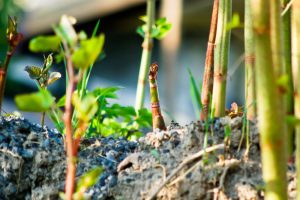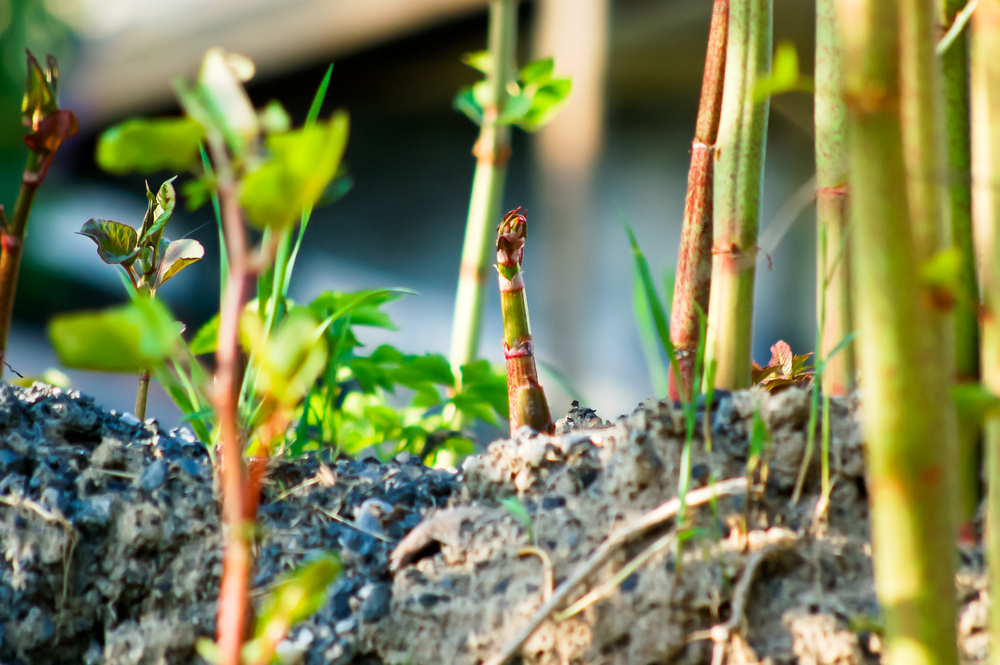Legal claims against property sellers relating to Japanese knotweed have spiked in the last year as a result of the rush to complete home sales before the stamp duty holiday deadline.
 There has been a 25% increase in misrepresentation cases – where property sellers have failed to declare the presence of the invasive plant on their property and the buyer has only discovered the problem after the sale completed.
There has been a 25% increase in misrepresentation cases – where property sellers have failed to declare the presence of the invasive plant on their property and the buyer has only discovered the problem after the sale completed.
CEL Solicitors, a specialist firm dealing with Japanese knotweed claims, reported how the increase in property transactions caused by the stamp duty holiday and other factors had coincided with a steep rise in buyers asking for its help to make claims.
Damage
Japanese knotweed is an invasive weed which can cause serious damage to a property if left untreated. Mortgage lenders are particularly wary of lending on homes where knotweed has been detected because of the devastation it can cause.
To be satisfied, they require a buyer to put into place a professional treatment plan and insurance-backed guarantee.
Sellers must therefore flag up to their solicitor if Japanese knotweed has been detected in their property. By being upfront about the presence of knotweed it enables the buyer to negotiate on price and put in place the action plan.
However, if a buyer does not know about the knotweed, they can be in for a surprise later down the line.
And, in the last year, with the number of transactions which have been rushed through to ensure buyers meet the stamp duty deadlines, it is understood more buyers than usual have been put in this situation.
Knotweed checks
Nic Seal, founder and MD of Environet, a Japanese knotweed removal expert, said “From conversations with panicked buyers and sellers in the run up to the stamp duty holiday deadline in June, I’m not surprised we’re seeing a rise in misrepresentation claims,” he said.
“Japanese knotweed checks are an important part of the conveyancing process and in the rush to complete, worsened by delays in the conveyancing process, it was tempting to just hope for the best rather than commission an additional survey.
“For buyers who now find themselves in possession of a property they may have paid less for or not have bought at all if they’d had all the facts, it can be a worrying time.
“But by treating the infestation professionally and securing an insurance-backed guarantee for the work, it is possible in most cases to restore the value of the property to close to its original value – as the so-called ‘knotweed stigma’ can still have some impact.”
Buyers: Making claims
Buyers can usually claim for the cost of treatment and the resulting loss in the value of the property, with the latter making up by far the largest cost due to the fact that knotweed can knock up to 10% off the value of a home.
Mark Montaldo, director at national law firm CEL Solicitors, explained: “Sellers have a legal obligation to declare the presence of Japanese knotweed on their own or neighbouring properties and if they try to conceal the plant it can be a very costly mistake.
“Defending a misrepresentation claim can be difficult, as even if Japanese knotweed doesn’t reappear until after the sale completes, a professional can still determine exactly how old the knotweed is and therefore the seller can be left with a hefty financial claim if it’s discovered it was present at the property prior to the sale.
“The best course of action for sellers is always to treat the knotweed professionally as soon as possible and declare its presence to avoid any problems further down the line. Remember that even if the knotweed was treated professionally years beforehand, there is still a legal requirement to disclose it.”
[box style=”4″]
Case Study: Jane and John Collins
John Collins and his wife Jane bought a new build home in East Molesey, Surrey in 2016. The developer who built the property had answered “No” to the Japanese knotweed question on the TA6 form, completed by sellers.
However, in spring 2017 the gardener noticed a plant that looked suspiciously like knotweed growing in the walled garden adjacent to the pool house.

This was identified by Environet as being Japanese knotweed and further investigations confirmed that due to its maturity, the plant would certainly have been present at the time of sale.
Japanese knotweed cuttings were also found on site, indicating that the seller had tried to conceal its presence.
The Collins’ were covered for legal fees under their home insurance policy, so they appointed a solicitor, Charles Lyndon, to pursue a legal case for misrepresentation. In the autumn of 2020 they won their case and were awarded several thousands of pounds in compensation for diminution in the value of their property.
John said: “Japanese knotweed can have a big impact on a property’s value and be difficult to get rid of, so we were initially shocked and worried when it was discovered in the garden of our new home. “We were fortunate that our home insurance was willing to cover us for pursuing a legal claim and, although it was a long process, in the end we achieved a favourable result.
“With expert help, it’s relatively easy to prove how long knotweed has been there, so I’d encourage anyone in a similar position to go down the legal route and try to recover the lost value of their home.
“The Japanese knotweed question is part of the conveyancing process for a reason and dishonest sellers need to be held accountable.”
[/box]














